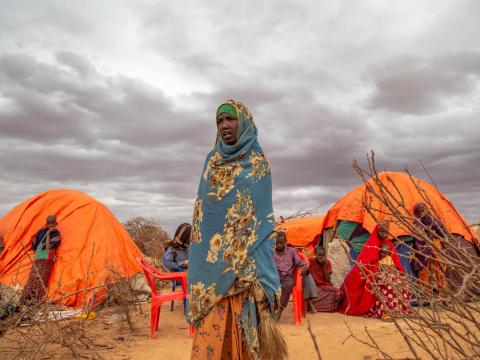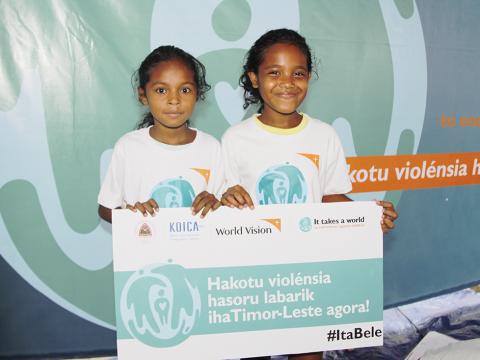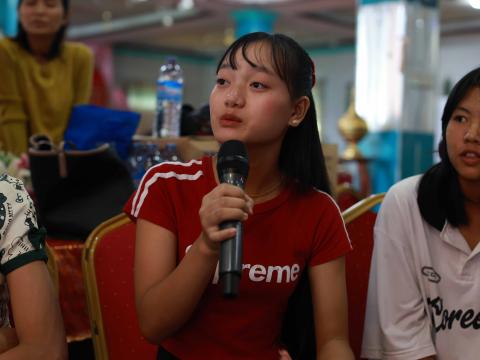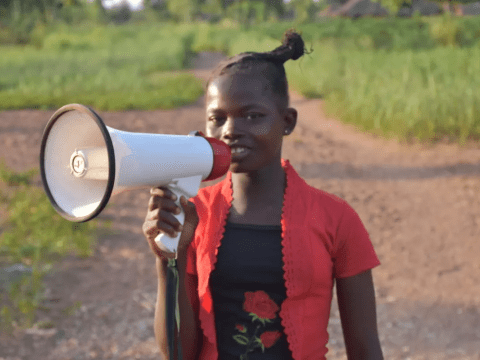
Leaders, protect your future: invest in child protection
Brikena Zogaj, warns that countries are risking a strangled future, if children protection is not properly funded.
Suldana is a young girl from Somalia. She needed water and food. In her own words, she describes fleeing with her little brother to escape hunger caused by a devastating drought. Once displaced, she had no choice but to beg, work as a child labourer, and endure mistreatment simply because she was a girl. To her, survival meant enduring exploitation. Normalisation of violence is heartbreaking.
Suldanas around the world are growing in number. Today, over 1 billion children globally experience some form of violence. Yet, when given the chance to speak, children tell us what they need: protection. During the COVID-19 pandemic, World Vision consulted children, and child protection emerged as one of their top priorities. When food insecurity reached crisis levels in West and Central Africa in 2022, children told WV they needed protection from prostitution, forced begging, family separation, mental health struggles, and the loss of their parents.
The Price of Inaction
Studies confirm what children, communities, and frontline workers have long known: failing to invest in child protection has devastating consequences. Research by World Vision on ration cuts (to be published soon) highlights that reducing aid has a direct and severe impact on child protection outcomes. The effect is even more pronounced for displaced children, where food insecurity becomes a key driver of violence, exploitation, and abuse.
Child protection actors have raised the alarm. In an era of escalating humanitarian crises—displacement, conflict, climate disasters, and economic instability--the Alliance for Child Protection in Humanitarian Action have documented the catastrophic impact of already underfunded child protection. A further decrease in funding means the collapse of protective environment around children, no protection services for the survivors of sexual abuse, trafficking, hazardous work, and more children left to fend for themselves in a world of increasing risks.
Three Priorities in the Face of Budget Cuts
While budget cuts threaten to reshape the humanitarian sector, one thing is clear: the world can not afford to allow child protection be deprioritised. Three key priorities are guiding global decision-making, and the following outline how child protection is key to each of these priorities:
Security threats: Protecting children is central to preventing violence, conflict, and instability. Child protection efforts disrupt the recruitment of children into armed groups and terrorist organizations, helping to break cycles of violence. Working for 75 years in the field, World Vision has learned that protecting women, girls, and boys is fundamental to preventing violence, conflict, and instability; preventing recruitment/conscription of children and adolescents into the military and armed groups; and reducing vulnerability of adolescents and youth to manipulation to join terrorist and armed groups . This makes child protection a key security issue too.
Lifesaving interventions: Child protection is not optional—it saves lives. It protects children from trafficking, sexual violence, forced child labour, family separation, and exploitation are life-threatening risks, particularly in times of crisis.
Health and food security: Child protection must be embedded in health and food security priorities. Ending child marriage, preventing teenage pregnancy, and protecting children from abuse are critical to addressing malnutrition, adolescent health, and sustainable development. We should not forget that child marriage, teenage pregnancy and sexual abuse/exploitation of children is one of the triggers of to end acute malnutrition of teenage girls and their babies.
Other Benefits of Child Protection
Child protection leads to improved long-term health outcomes by preventing physical and psychological harm and promoting adolescent health-seeking behaviour. Lastly, strengthening child protection systems enhances coordination between child welfare, healthcare, and law enforcement, ensuring that vulnerable children to violence receive timely medical and psychological support, reduce violence at home.
Child Protection Saves Lives and Strengthens Communities. World Vision speaks with confidence, given that for decades the child protection programmes and advocacy efforts in 61 countries (including the global campaign It Takes A World To End Violence Against Children) have driven sustainable change, prevented harm, and saved lives. A strong focus on faith leaders, community engagement, and local ownership has proven effective in shifting harmful norms and strengthening protective environments for children.
This work, our partnership, and our impact on 487 million children gives us a strong foundation for calling for more investment in children, for child protection to be prioritised by everyone.
Child protection is also cost-effective. For example, the Nurturing Care Group programme in Ghana, a Social and Behaviour Change multi-sectoral approach to prevent and address violence against children, demonstrated a clear return on investment, with a cost of just $9.86 per family and $3.29 per child. Despite this value for money, World Vision and partners warn that the cost of inaction, however, is far greater—for societies, for security, for health, and for food security.
Historically Child Protection has been one of the most underfunded sectors; now is the moment to creatively and wisely invest.
Whatever your motivation, protect children
World Vision speaks with conviction about protecting children, because we believe that God’s plan for every child is life in all its fullness, and we do everything we can to realise to this plan. Jesus gave His life for every child: for Suldana, as much as for any child of those making decisions about investing in child protection. God expects us to protect the most vulnerable in our society.
For those who do not share our motivation, there are compelling national and generational reasons for investing in child protection. Failing to prioritise child protection will result in greater security threats, as well as threats to the health and food security of the next generation of adults. What's more, if the next generation believe that exploitation, hunger, violence and displacement are simply the norm, then their nation will be strangled by a cycle of abuse that will inevitably stunt its development and flourishing, locally and on the world stage.
We spend our money on what matters most to us. Isn't a future where children flourish and grow to be productive and happy adults worth a major investment?
To learn more about World Vision's Child Protection and Participation programming click here
Brikena Zogaj serves as the Senior Advisor for External Engagement on the Global Child Protection and Participation Team at World Vision International (WVI). She holds a Master’s degree and has 25 years of experience in child rights. Her professional experience encompasses positions within national and international CSOs, philanthropic organizations, networks, alliances, and government structures.


